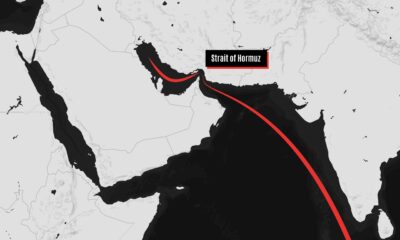Asia
Who are the foreign fighters of IS-K in Afghanistan?

Islamic State of Khorasan IS-K, also known as the Daesh terrorist group has added a large number of foreign fighters to its organization in addition to local fighters. Pakistanis, who are always considered as the main options for leadership of IS, after two periods of leadership of this branch, now they have a significant role in the Council of Lajneh. This council has the decision-making authority of IS and evaluates and finalizes the decisions of the leader of this branch.
Also, despite a number of Pakistani IS commanders being killed in Afghanistan by the Taliban, some Pakistanis are still acting governors of some provinces, including Kunar and Laghman.
At the same time, the Uzbek fighters of Jundullah have also recently joined the IS. The findings show that the Uzbek members of the Jundallah group pledged loyalty to the IS after the assassination of their leader by the Taliban. It has been said that two thousand fighters of Jundallah have joined the IS.
Meanwhile, the IS has increased its efforts to recruit more Pakistani and Uzbek fighters. The leadership of this branch of IS-K is still trying to include Uzbek fighters who are disaffected with the Taliban.
It should be mentioned that based on the presence of these fighters, the activity of IS has spread to Central Asia states and there was some rocket incident as well.
The IS group launched its branch activity in Afghanistan and the region under the name “IS-K” for the first time in 2015. The geography that IS considered for its caliphate included parts of Afghanistan, Iran and also Pakistan.
IS-K intensified its activates in Afghanistan
Currently, the activity of this group has increased and has expanded its attacks to Central Asia. The latest report of the United Nations shows that the Khorasan branch of IS currently has between four and six thousand fighters in Afghanistan.
Recently, it has been reported that due to the geography of IS-K, most of its members have Afghan citizenship and are also present in the key positions of this group.
Definitely, the key part of IS-K is made up of foreign jihadists; People who pledged allegiance to IS due to dissatisfaction with other jihadist groups, including the Afghan and Pakistani Taliban.
Some of the members of al-Qaeda are also related to IS, but the question is, which groups of fighters are currently members of IS-K and what role do they play in expanding the scope of this group’s activities?
Pakistanis and the founding of IS-K till Council of Lajneh
Despite the presence of a number of Afghan fighters in the composition of IS-K, this branch was founded for the first time by the disgruntled Pakistani Taliban in Afghanistan.
Hafiz Saeed Orakzai, the former commander of the Pakistani Taliban, left the TTP in October 2014 due to disappointment with the Afghan and Pakistani Taliban and pledged allegiance to IS-K.
Orakzai worked as the leader of the Khorasan branch of IS for about one and a half years and was finally killed by US forces in August 2016.
After one year of the leadership of this group by Abdul Haseeb Logari, the leadership of IS-K again went to Pakistani fighters. At that time, Abdullah Orakzai, known as Aslam Farooqi, was in charge of the leadership of the group from April 2017 until he was finally arrested and imprisoned by the then Afghan security forces in 2020.
Since then, some resentful Pakistani Taliban fighters have been members of IS-K branch and as commanders, they have played a key role in the current IS insurgency.
Kunar is next target for IS
Even some of the “emirs” of the IS-K branch in Afghanistan are Pakistani fighters. Among these, Qari Fateh was working as the so-called “emir” of IS-K in Kunar province.
In February of this year, the Taliban announced by publishing pictures that they killed Qari Fateh in Kabul.
Taliban spokesman Zabihullah Mujahid said at that time that Fateh was the head of intelligence and operations of IS-K in Afghanistan. The Taliban even named him as a responsible man for attacking mosques and diplomatic places.
The Taliban had once again announced in early June of this year that they killed another commander of the Daesh identified as Tarab Bajauri in Laghman province. This Pakistani commander was active as the “emir” of the Khorasan branch of the IS group in Laghman province. It has said that Bajauri joined IS along with Hafiz Saeed Orakzai.
Bajauri was known for his long history in military affairs and was among those top IS-K members that significantly spread the influence of the group in Kunar province. The Taliban called him an important member of the Khorasan IS branch in Afghanistan. Such positions of the Taliban show that Pakistani fighters are one of the main pillars of IS-K and are actively present in Afghanistan under the control of the Taliban.
IS key members arrested and killed
Currently, Asadullah Orakzai is another prominent Pakistani commander of IS-K branch. He works as the leader of Daesh in Laghman and is also a member of the Council of Lajneh. According to the reports, Orakzai is in charge of this IS-K leadership council and its members decide on the activities of this group in “Khorasan region”.

Orakzai, alias Aslam Farooqi, the leader of Daesh’s so-called Khorasan Province affiliate, arrested in Afghanistan
Qari Fateh was also a key member of this council where he had a key say on the future activities of the branch in Afghanistan.
Also, Saifullah Orakzai, as one of the prominent commanders of the IS-K branch, is a member of Lajneh council.
In this way, the findings show that Pakistani fighters are active members of the IS-K branch, who are present in Afghanistan, and at least in addition to the experience of leading this branch twice, they are active as governors in the provinces and also as military and intelligence commanders.
At the same time, IS-K is trying its best to increase the number of its Pakistani fighters. This branch of IS has made the issue of the allegiance of Pakistani fighters a part of its future plan.
In this process, people who are dissatisfied with the conditions of working with the Pakistani Taliban are attracted to IS in order to expand the activities of this group in eastern Afghanistan and parts of Pakistan.
It should be mentioned that most of the Pakistani members of the Khorasan branch of IS have been attracted to this group due to dissatisfaction with their previous groups, and due to the high level of dissatisfaction, the number of Pakistani IS fighters is likely to increase.
Jundullah group joined Daesh with thousands of fighters
The findings show that the Uzbek members of the Jundallah group have also joined IS-K in the north of the country. According to the information, except for a small part of this group, most of its Uzbek commanders and fighters have joined IS in Khorasan.
IS has incorporated a branch of the Jundullah group, which consists of Uzbek fighters in northern Afghanistan. In this way, Mullah Saad, a citizen of Uzbekistan, has started working as the leader of this group in IS-K and Osama Ghazi from Uzbekistan as his deputy.
In addition to these two leaders of the Jundullah group, about two thousand fighters of this group and thousands of their supporters in the provinces of Takhar, Kunduz, Badakhshan and Faryab have also become part of IS-K.
This fundamental development took place after the Uzbek members of the Jundullah group became distrustful of the Taliban’s intentions. According to the findings, Uzbek fighters played a major role in the fall of the North to the hands of the Taliban, but after the return of the Taliban into the power, the leadership and members of Jundullah faced their indifference.
Besides this, Taliban people even assassinated some of its leaders to control this group. The information shows that Usman Ghazi, one of the Uzbek immigrants who entered Afghanistan with five thousand Uzbek citizens during the rule of Burhanuddin Rabbani almost four decades ago, later became a member of Jundallah based on Abdul Malik Rigi’s request.
At that time, Rigi was one of the leaders of Jundullah, who was active in Iran, and was executed after being arrested by the security forces of Iran.
But after the fall of the first government of the Taliban in 2001, Ghazi went to Pakistan to manage his group’s guerrilla attacks against the previous government along with the Afghan Taliban. According to the order of Mullah Omar, the founder of the Taliban, he returned to Zabul with hundreds of members of this group, and in 2016, he decided to unofficially pledge allegiance to IS in consultation with some Taliban leaders.
Jundallah joins IS to revenge against the Taliban
Apparently, this scenario was part of making a case for his removal, because Usman Ghazi was ambushed by Taliban commanders in the following weeks and was killed along with his wife and several children on the road to Zabul.
According to the findings, this action caused Osama Ghazi, his son, to go to Kandahar and Badakhshan with 150 other Jundallah members from Zabul, where his father was present, and then leave there. But he was waiting to take revenge from the Taliban until he joined IS with all the members of his group after the Taliban regained control.
Meanwhile, Daesh has used the members of Jundallah to expand its activities to Central Asia. For example, a member of this group, who was active in Faryab under the command of Salahuddin Ayubi, launched a rocket attack on Uzbekistan.
On the other hand, IS in Khorasan has increased its efforts to get allegiance from Salahuddin Ayubi, the commander of Uzbek origin and disaffected Taliban. He has a close relationship with the fighters from the north and seems to be able to connect IS with some other armed groups in Tajikistan and other parts of the northern part of the country.
Also, according to its plans to expand its activities to Central Asia, IS is seeking more contact with Uzbek fighters. This effort somehow highlights the connection of this group with some commanders and fighters of the Islamic Movement of Uzbekistan.
This is despite the fact that Daesh has previously assigned a team responsible to monitor Tajikistan and get support from there. It should be remembered that this group, in addition to Khorasan, also pays serious attention to the Indian subcontinent.
IS has a wider plan not only in Afghanistan and Pakistan
According to the reports, the IS leadership has ordered its members in the Indian subcontinent to intensify their activities in India and Pakistan in mid-2022. Abul Hasan al-Hashemi Qureshi, the then leader of IS in Iraq, asked Sheikh Zubair Ahmad, the governor of IS in India, for positive changes in that geography.
Following the same order, Sheikh Zubair Ahmed had decided to accelerate its propaganda staff and used Telegram as a social tool to spread its propaganda activities.
IS declared a caliphate in 2014, and Abu Bakr al-Baghdadi was considered the first leader of the group. It should be mentioned that this group has extensive activities in Afghanistan in addition to Iraq and some other Arabic countries.
These terrorist activities have been deepened after the return of the Taliban to power and have included attacks on diplomatic places and rocket attacks on Central Asian countries.
Considering the recent changes of IS and the joining of foreign fighters in the rank of Khorasan, it seems that this group has plans to exert more influence in Khorasan Province. Previously, the information showed that IS-K is also seeking to capture Kunar province, a case that has been delayed after the evaluation of the Council of Lajneh.
Asia
Chinese navy chief and top nuclear scientist expelled from legislature

The chief of staff for the People’s Liberation Army (PLA) Navy, Vice Admiral Li Hanjun, and Liu Shipeng, the deputy chief engineer of the state-owned China National Nuclear Corporation, were removed from their positions in the country’s legislative body.
Li is the latest in a series of PLA generals and a handful of defense industry executives implicated in a widespread investigation within the military.
In a statement on Friday, the NPC Standing Committee announced, “The Navy Soldiers’ Congress has decided to remove Li Hanjun from his post as a representative to the 14th National People’s Congress.”
The Gansu People’s Congress also dismissed Liu Shipeng from his role as an NPC deputy.
Additionally, the Standing Committee revealed it had voted to remove Miao Hua, a former top general who previously oversaw the PLA’s ideological work, from the Central Military Commission (CMC), China’s highest military command body led by President Xi Jinping.
The removal of Li and Liu from their NPC memberships suggests they are facing serious disciplinary action.
China typically remains silent about purges within the military, and announcements from the NPC are one of the few indicators of such campaigns.
There is little public information available about Li and Liu, as both have worked in sensitive positions.
Before becoming the navy’s chief of staff, Li, 60, was the deputy director of the CMC’s Training and Administration Department. He was appointed to this role after serving for a year in the CMC’s Office for Reform and Organisational Structure.
In 2014, he was promoted to vice admiral upon his appointment as commander of the naval base in Fujian province, where Miao also spent a significant part of his career. At that time, he was the director of training at the China Naval Command College and was soon promoted to president of the school.
According to official media reports, nuclear scientist Liu was born into a family that “served China’s nuclear dream for three generations.”
As the deputy chief engineer at CNNC, which oversees all aspects of China’s civil and military nuclear programs, Liu also served as the Communist Party secretary and president of CNNC’s “404 base” in Gansu.
Covering an area of over 1,000 square kilometers, the base was established in 1958 and is the country’s first and largest nuclear research center. It played a crucial role in the development of China’s first atomic bomb in 1964 and its first hydrogen bomb three years later.
This secretive base is still considered a key hub for China’s nuclear deterrence and nuclear industry.
According to statements from provincial authorities, Liu was named “Gansu’s outstanding entrepreneur” in 2023.
Asia
China, US reach agreement on export controls

The Chinese Ministry of Commerce announced on Friday afternoon that Beijing and Washington have remained in close contact since the two-day trade talks in London earlier this month, confirming the details of a framework agreement.
“China will review and approve export applications for controlled items in accordance with its laws and regulations, and the US side will, in turn, lift a series of restrictive measures against China,” the ministry stated.
“We hope the US side will cooperate with China in line with the important consensus and conditions established during the conversation between the two presidents on June 5,” the statement continued.
On Thursday, US President Donald Trump said the US had “signed” a trade deal with China the previous day, without providing details.
“We signed the deal with China yesterday, right? We signed the deal with China,” Trump said at a White House event introducing a budget law. “With the China deal, we are starting to open up China,” he added.
He also mentioned that a “very big” deal, likely with India, would be signed soon.
Rare earth elements
Following the event, US Commerce Secretary Howard Lutnick told reporters that the US and China had signed an agreement codifying the terms decided upon in previous trade negotiations.
“They will deliver rare earth elements to us,” Lutnick said in a televised interview with Bloomberg, adding that if this commitment is fulfilled, Washington will lift its “countermeasures.”
Rare earth elements, essential for producing high-tech products, including those for the defense industry, were a major point of contention in the trade talks. China holds a near-monopoly on the supply of these minerals due to its massive share of global refining capacity.
Responding to a question on Thursday about rare earth exports, ministry spokesman He Yadong said China had approved a “certain number” of applications and would “continue to strengthen” the review and approval process for eligible applications.
He added that Beijing is willing to “strengthen communication and dialogue” with other countries on export controls and actively promote appropriate trade.
Lutnick also stated that the US plans to reach agreements with 10 major trading partners in the coming weeks. The deadline for countries to negotiate trade terms before higher tariffs are reinstated was July 9, following a 90-day suspension of import tariff hikes announced on April 2.
The two negotiating teams concluded the London talks by announcing they had agreed “in principle” on a “framework” that both sides would take home for their respective leaders to review, as they sought to get their uneasy truce, signed last month in Geneva, back on track.
The negotiations began after a highly anticipated phone call between Xi Jinping and Trump, which seemingly ended an intractable stalemate.
In the weeks following the initial agreement in Switzerland, Washington claimed China was restricting exports of critical minerals, while Beijing reacted to US restrictions on semiconductors and threats to impose visa barriers on Chinese students.
Asia
China hosts SCO defense ministers on warship amid regional tensions

Chinese Defense Minister Dong Jun hosted his Iranian counterpart and other high-level defense officials from Shanghai Cooperation Organisation (SCO) member states aboard an advanced Chinese warship, just days after the US bombed Iran’s nuclear facilities.
Iranian Defense Minister Aziz Nasirzadeh was among the defense officials welcomed by Dong on a military vessel in the coastal city of Qingdao, China, as part of a two-day SCO defense ministers’ meeting that concluded on Thursday.
According to Chinese state television CCTV, Nasirzadeh and other defense officials toured the People’s Liberation Army (PLA) Navy’s Type 052D destroyer, the Kaifeng, and later attended a reception on the ship’s deck.

Aboard the ship, Nasirzadeh thanked Beijing for “supporting Iran’s legitimate position following the recent attacks” by Israel and the US.
“We hope that China will continue to stand on the side of justice, help maintain the current ceasefire, and play a greater role in de-escalating regional tensions,” Nasirzadeh said, according to Xinhua.
In his address to the assembled ministers, Dong reportedly stated that “unilateralism, protectionism, and hegemonic and bullying acts are on the rise, seriously disrupting the international order and becoming the greatest source of chaos and conflict.”
Dong called for closer cooperation within the United Nations, the SCO, and other multilateral frameworks, urging members to unite with “more like-minded forces” to defend international justice and maintain global stability.
“SCO countries must remain true to the organization’s founding ideals, uphold the ‘Shanghai Spirit,’ and deepen practical cooperation in all areas,” Dong said. “With stronger actions, we can jointly safeguard a peaceful environment for development,” he added.
The event followed the US attacks on three of Iran’s key nuclear facilities on Saturday, which Beijing strongly condemned.
The Chinese Foreign Ministry stated that the attacks on nuclear facilities under the supervision of the International Atomic Energy Agency seriously violated the UN Charter and its principles.
Additionally, the SCO meeting coincided with a NATO leaders’ summit in The Hague. In a statement from The Hague, US President Donald Trump announced that the US would hold talks with Iran about a possible nuclear deal “in the coming week.”
Bilateral Talks
According to Xinhua, the Chinese defense minister later held separate bilateral meetings with the defense ministers of Belarus, Pakistan, Kyrgyzstan, and Russia. The state news agency reported that all parties appreciated Beijing’s efforts and significant contributions to developing SCO operational mechanisms and deepening inter-sectoral cooperation during its rotating presidency. They also expressed a strong will to further consolidate and expand military ties.
Pakistani Defense Minister Khawaja Asif praised Beijing’s role in de-escalating tensions. “Pakistan highly values its robust friendship with China and is ready to work together to implement its three global initiatives, deepen military cooperation, and help maintain regional peace and stability,” he said.
For Russian Defense Minister Andrei Belousov, this year—the 80th anniversary of the victory in World War II, the Chinese people’s war of resistance against Japanese aggression, and the world’s anti-fascist war—presents an opportunity to deepen bilateral military relations. “In line with the consensus of our leaders, we will intensify strategic communication and cooperation and contribute to global strategic stability,” he said.
Meanwhile, Indian Defense Minister Rajnath Singh also attended the Qingdao meeting. This marked the first visit by an Indian defense minister to China since the deadly border clash between the two countries in 2020.
Military trust
According to the Chinese Ministry of Defense, the SCO defense ministers’ meeting is one of the key events held during China’s rotating presidency of the SCO this year. The ministers, along with representatives from the SCO and regional anti-terrorism bodies, gathered to further strengthen military trust and deepen practical cooperation among member states.
The SCO, a 10-nation bloc comprising China, Russia, Kazakhstan, Kyrgyzstan, Tajikistan, Uzbekistan, Pakistan, India, Iran, and Belarus, currently covers approximately three-fifths of the Eurasian continent and about 43% of the world’s population.
The Beijing meeting, held under the rotating presidency of the Shanghai Cooperation Organisation, highlighted China’s role as a significant international actor and the importance Tehran places on its relationship with Beijing, even as China has largely remained on the sidelines of the Israel-Iran conflict.
During a regular press conference at the Chinese Ministry of Defense on Thursday, when asked if Beijing was considering providing military support to Iran as an SCO member, ministry spokesman Zhang Xiaogang told CNN, “China is ready to cooperate with all parties to play a constructive role in maintaining peace and stability in the Middle East.”
Kaifeng destroyer
The Kaifeng destroyer, where the meeting’s reception was held, is the sixth vessel of the extended Type 052D variant and serves in the North Sea Fleet. Commissioned in April 2021, the ship is approximately 159 meters (521 feet) long, weighs 7,500 tons, and is equipped with 517C anti-stealth radar. Its expanded deck allows for the landing of the PLA Navy’s Z-20 helicopters.
The warship has conducted numerous long-range exercises, including a passage through the Tsushima Strait in April, as part of Beijing’s growing operational presence in the western Pacific.
It was publicly displayed during the 74th-anniversary celebrations of the Chinese navy in Qingdao in 2023.
-
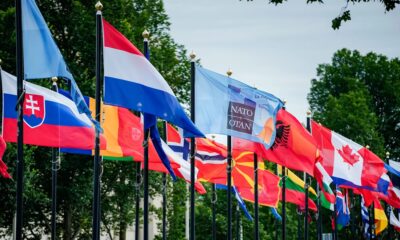
 Diplomacy2 weeks ago
Diplomacy2 weeks agoNATO summit focuses on arms race in the Silicon Valley age
-
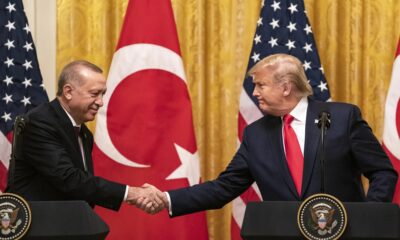
 Diplomacy2 weeks ago
Diplomacy2 weeks agoErdoğan to meet Trump at NATO summit to mend relations
-
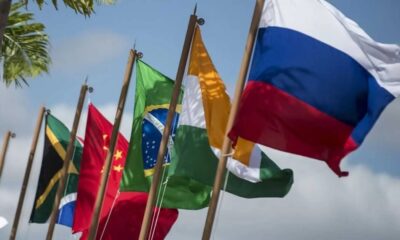
 Diplomacy2 weeks ago
Diplomacy2 weeks agoBRICS internal trade volume hits the $1 trillion mark
-

 Asia2 weeks ago
Asia2 weeks agoJapan’s prime minister skips NATO summit amid alliance strain
-
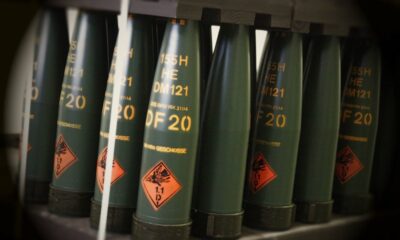
 Diplomacy2 weeks ago
Diplomacy2 weeks agoGerman arms industry expands presence in India amidst geopolitical shifts
-
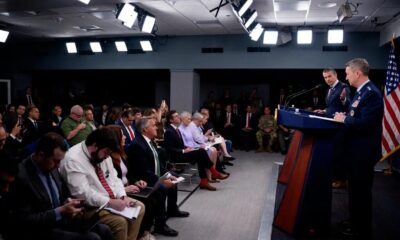
 America2 weeks ago
America2 weeks agoPentagon divided over military priorities in Asia and the Middle East
-

 Russia2 weeks ago
Russia2 weeks agoChina’s energy pivot: Power of Siberia 2 gains traction after Iran-Israel conflict
-
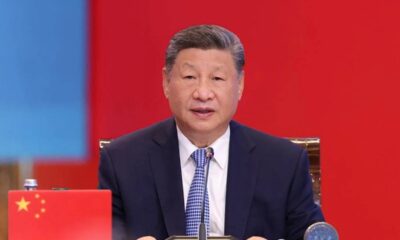
 Diplomacy2 weeks ago
Diplomacy2 weeks agoXi Jinping to miss BRICS summit in Rio for the first time






